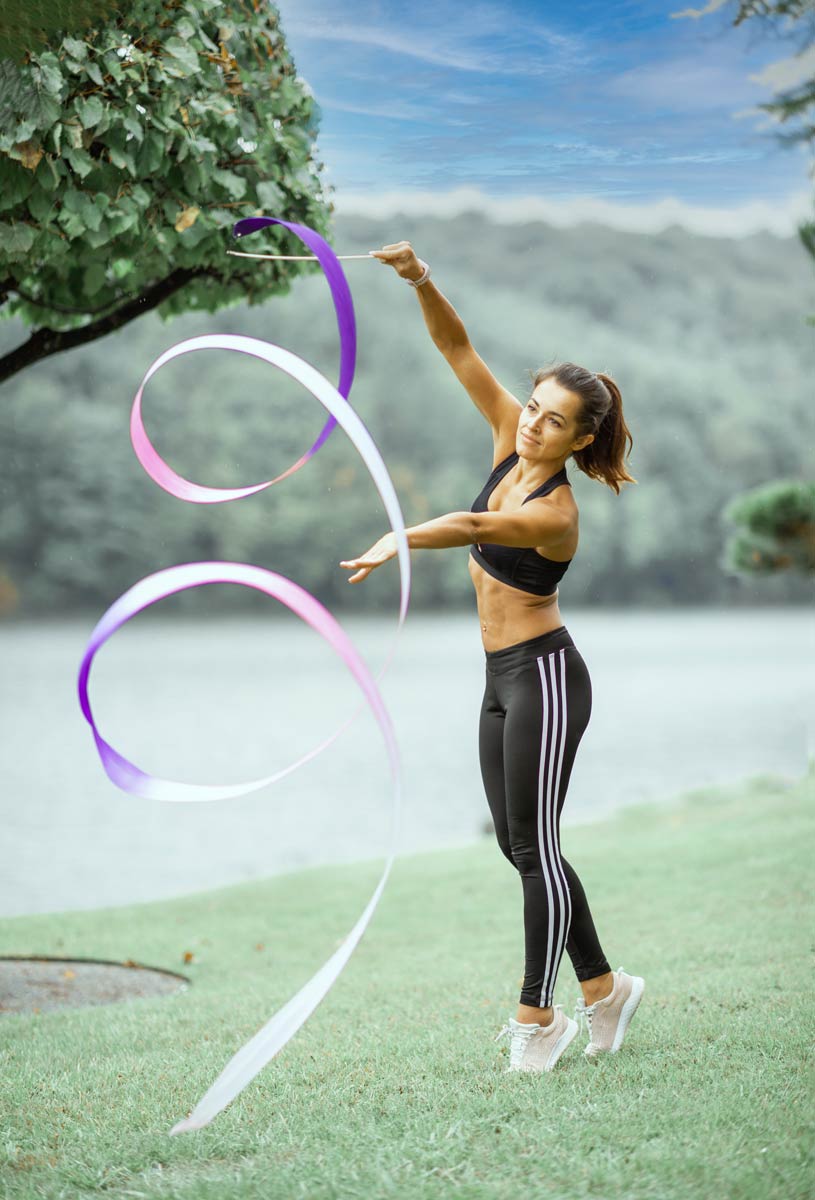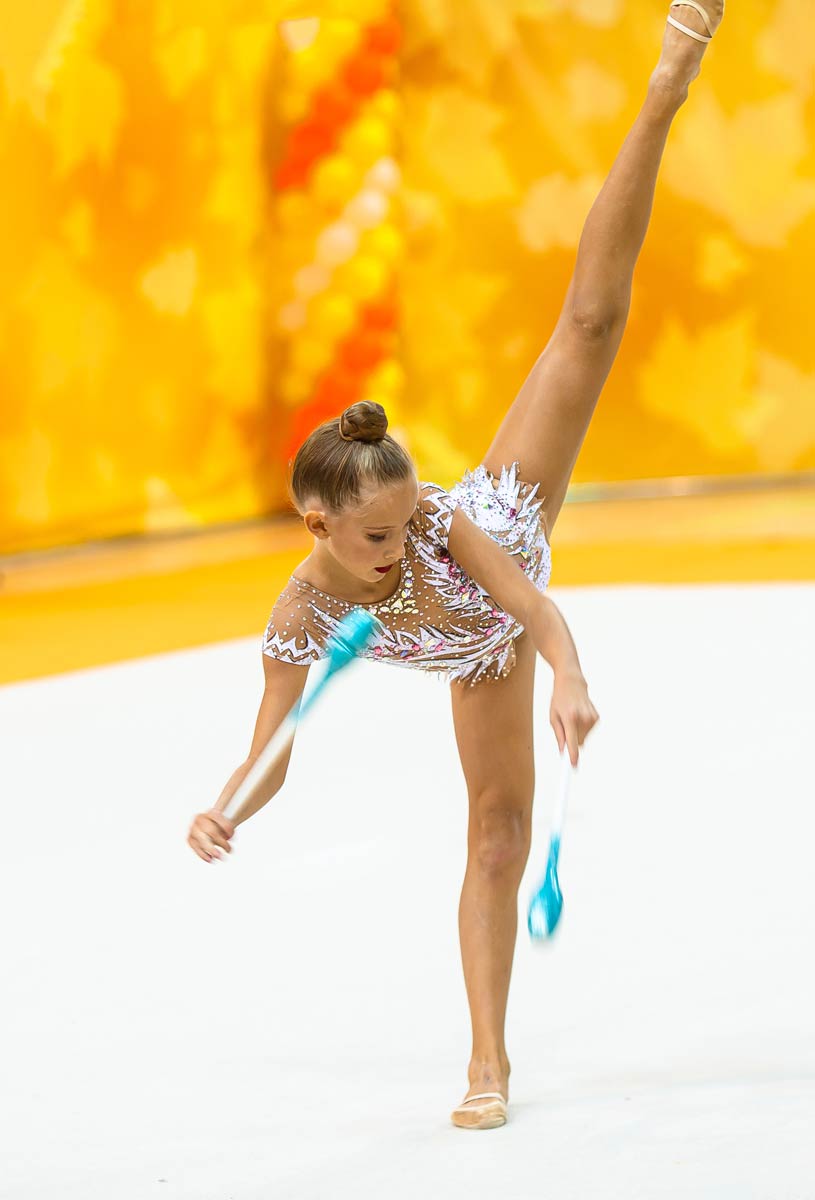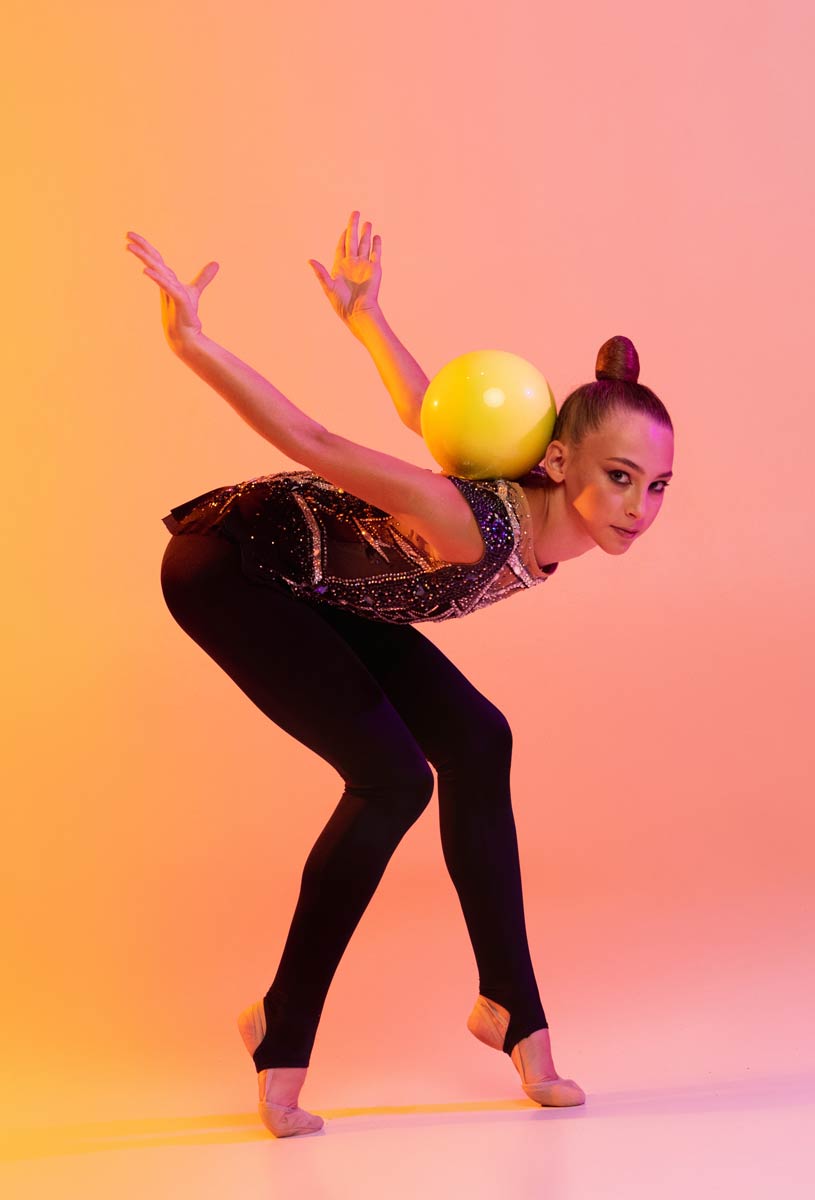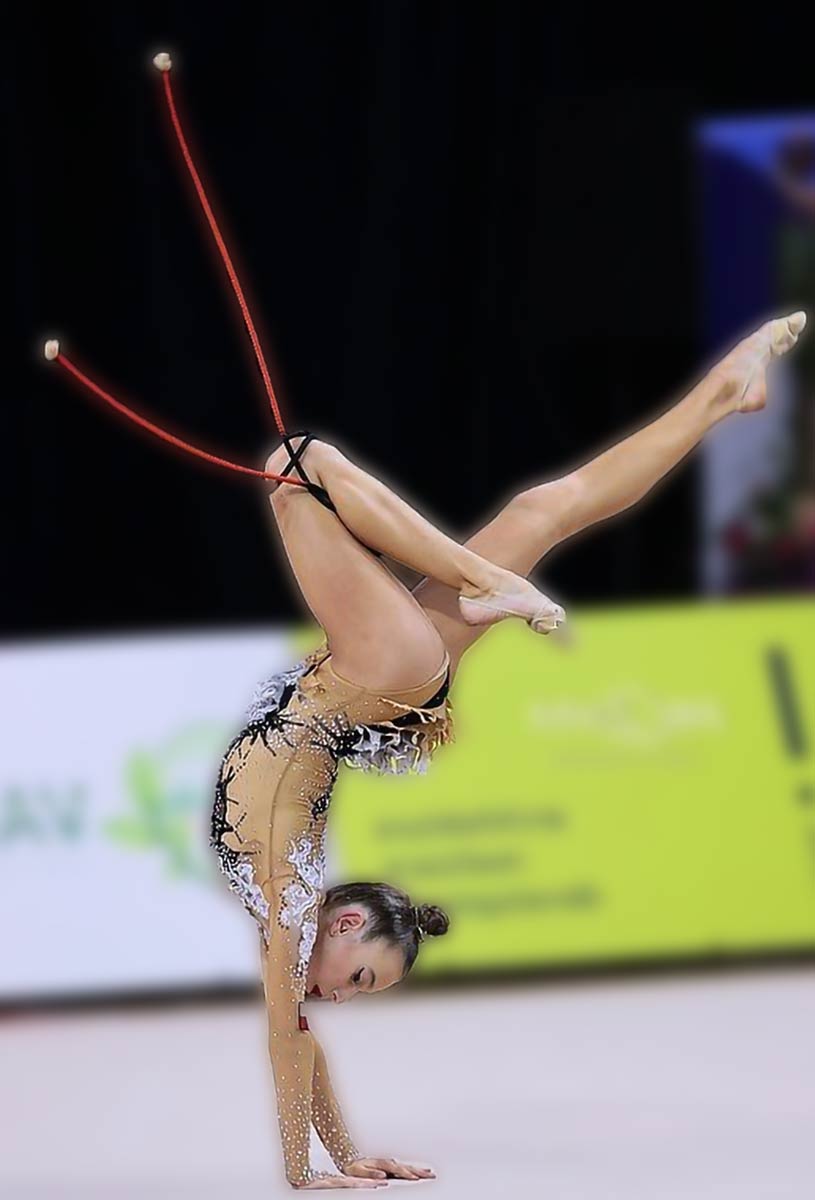

Gym Score Depot is a place for true rhythmic gymnastics fans and for those who want to learn more about this spectacular and, at the same time, the most elegant sport. Here you can find everything about the history of Olympics gymnastics, learn about the outstanding Canadian gymnasts and the results of their performances at the Olympic Games. We have also compiled a list of the best rhythmic gymnastics schools in the country.
Rhythmic Gymnastics: Rules and Apparatus
Rhythmic gymnastics is one of the most elegant and spectacular sports, the essence of which is to perform gymnastic and dance exercises. Usually, gymnasts perform these exercises using a hoop, ball, rope, ribbon or clubs.
Rhythmic gymnastics is an exclusively female sport. It debuted at the Los Angeles Olympics in 1984. Since 1996 (Games in Atlanta), two sets of awards have been played: individual and group all-around.
The modern program of international competitions consists of the individual program (where the gymnast performs with each apparatus); and group exercises (combination, where one exercise is performed with the same apparatus for all gymnasts, the second – with two different apparatus).
While we actively support all competitions and events related to rhythmic gymnastics, we are proud to say that we are not alone in making a difference. We go hand in hand with like-minded influencers who share our values and are willing to contribute to the growth of the sporting community and create a safe and enjoyable environment for gymnasts. Among them:
Apparatus Used in Gymnastics Olympics
As we have already said, gymnasts performing in the individual adult program of the Olympic Games can demonstrate exercises with four apparatus.
Rope
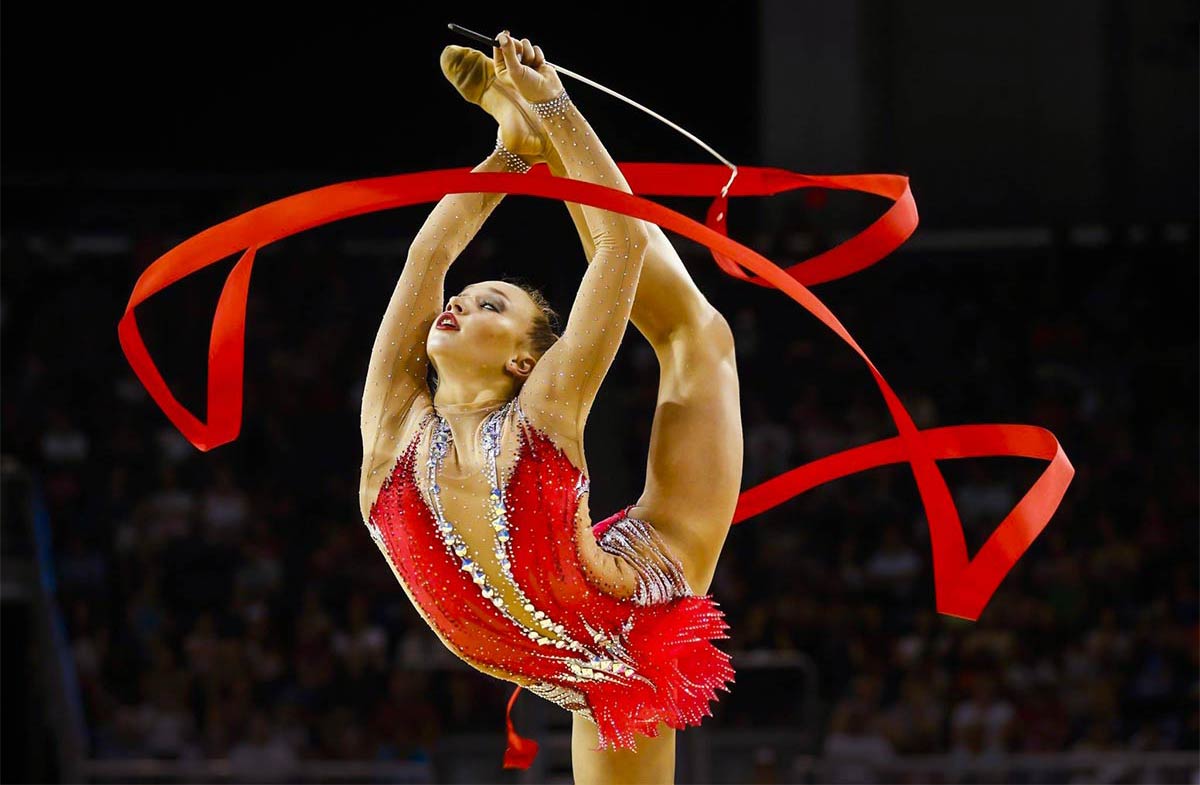
The rope is made of hemp or other synthetic material. This object can be both plain and coloured, and its length is proportional to the gymnast’s height. Rope exercises require agility, jumping ability and coordination.
Hoop
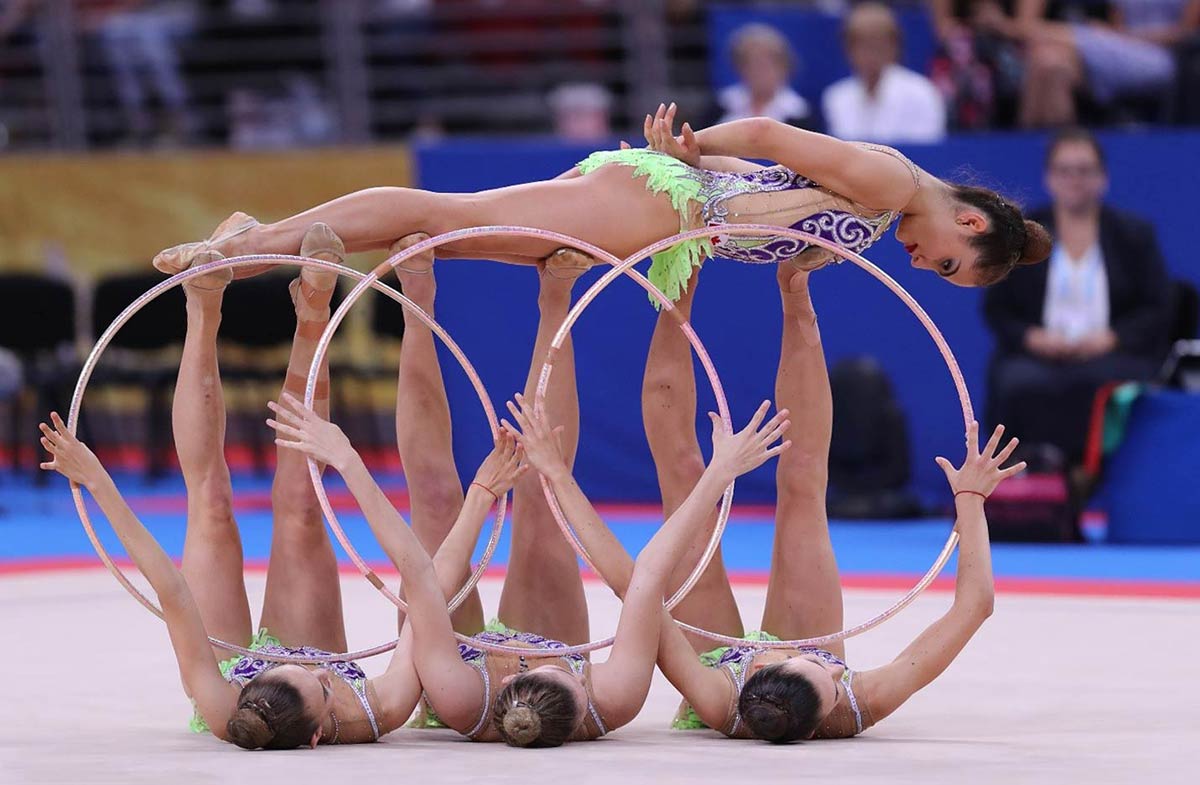
The hoop is made of plastic. The inner diameter of the hoop varies from 80 to 90 cm, and its weight is 300 grams. Many gymnasts wrap the object with coloured tape to make it more beautiful (most often, it is chosen to match the colour of the leotard).
Ball
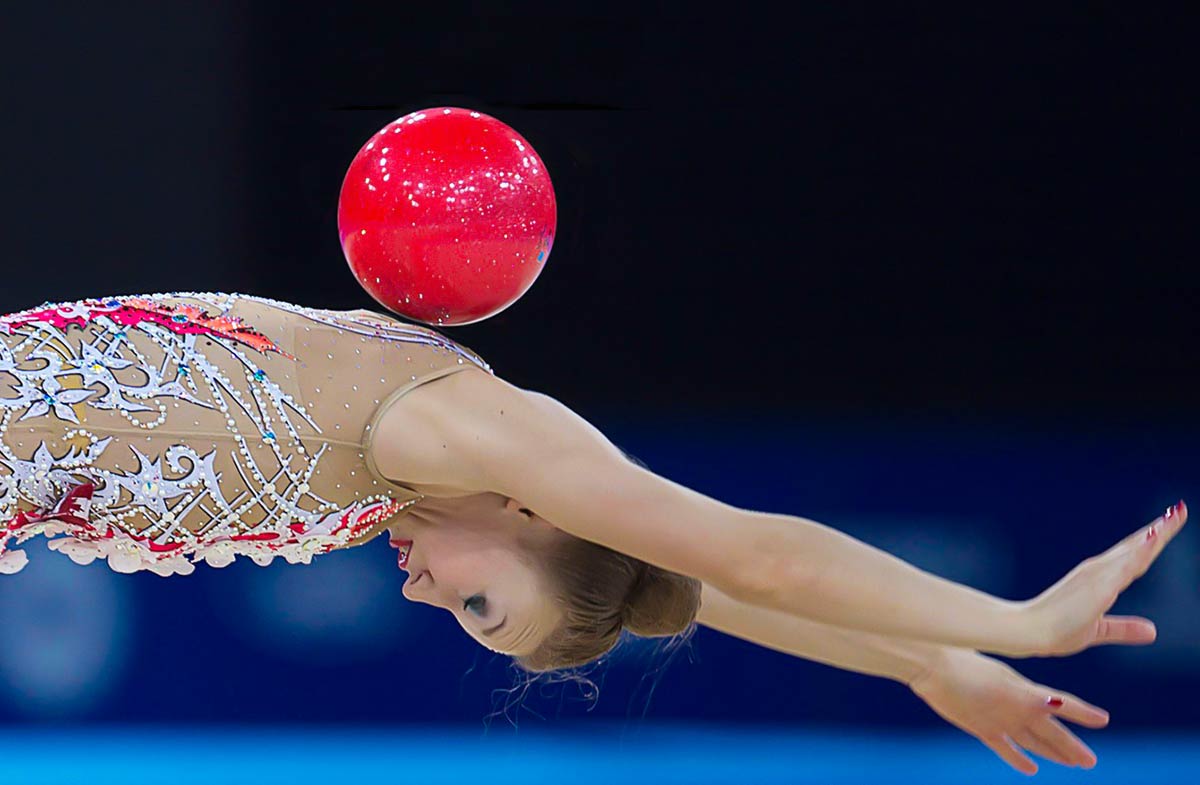
The ball is made of rubber or synthetic material. The diameter is 18-20 cm, and the weight is 400 gr. The ball can be any colour. It is traditionally considered more an elegant and lyrical apparatus than a dynamic one.
Clubs
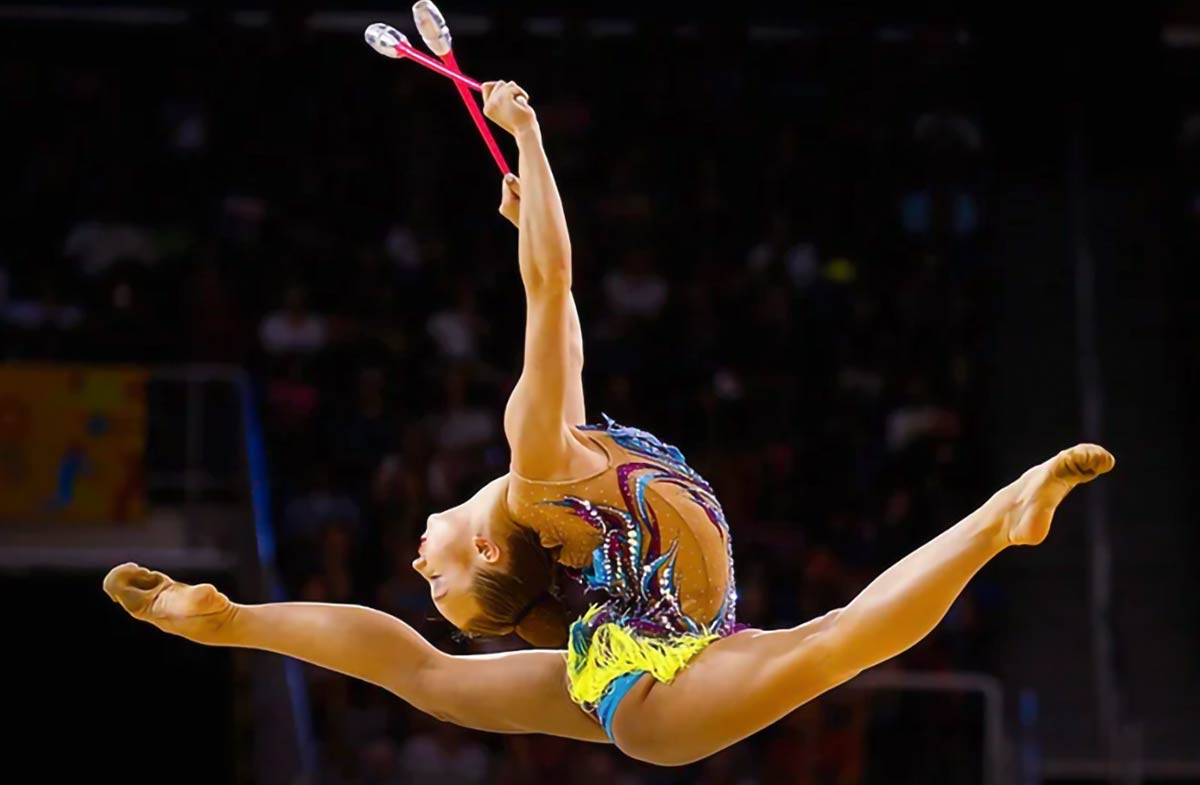
The clubs are made from synthetic material. The length of the clubs is 40-50 cm, and each of them weighs 150 grams. They can be plain or coloured. Clubs are especially popular with gymnasts who are able to use both their right and left hands equally.
Ribbon

This gymnastics apparatus consists of a stick and a ribbon. Its length is 6 m for adult gymnasts, 5 m for juniors, and its width is 4-6 cm. The ribbon can be either plain or painted in any colour. The stick is cylindrical or conical in shape and is mainly made of plastic, bamboo, or fibreglass. The ribbon is the most attractive of all gymnastic apparatus. Ribbon work requires gymnasts to have strong shoulder and arm muscles.
Rhythmic Gymnastics Rules
As mentioned above, gymnasts may or may not use special equipment in their performances. Recently, at world-class competitions, gymnasts perform only with this apparatus. In group exercises, one or two types of apparatus should be used simultaneously.
All exercises are accompanied by music. The choice of music depends entirely on the wishes of the gymnast and coach. But each exercise should last between 75 and 90 seconds. Rhythmic gymnastics competitions are held on a gymnastic carpet of 13×13 meters.
Scoring System
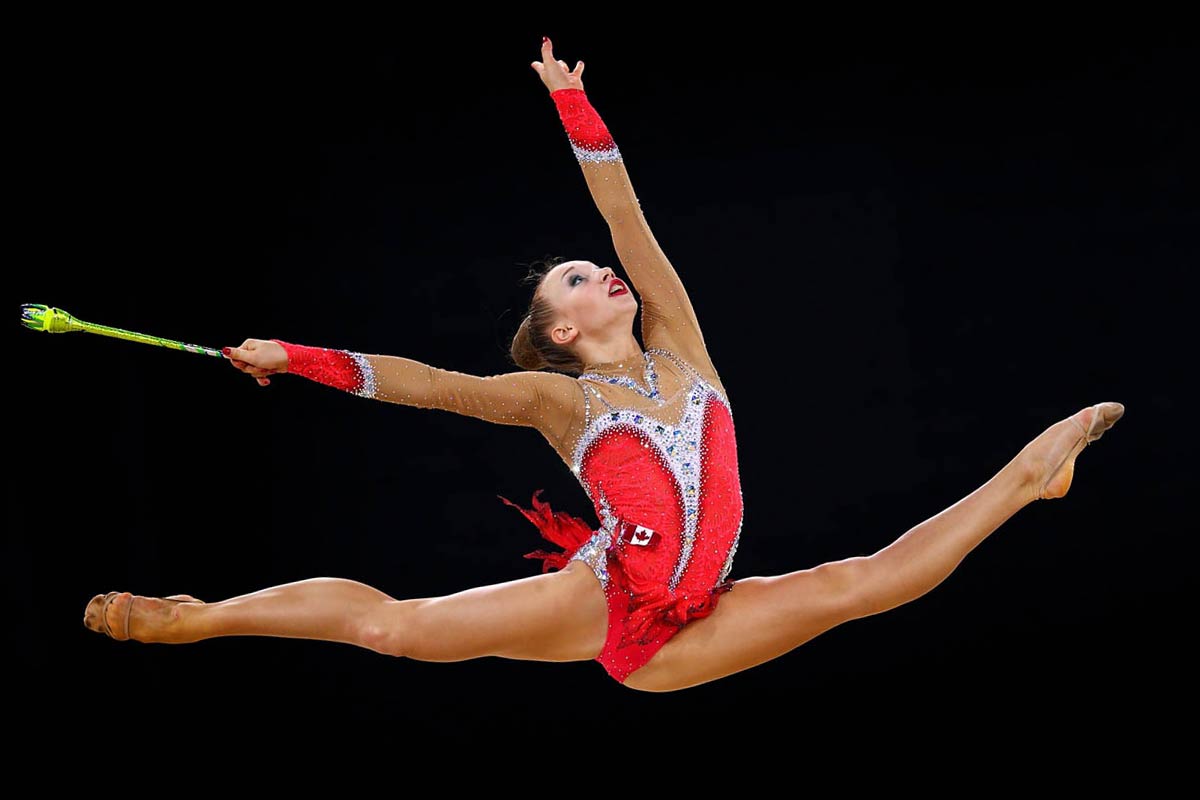
In recent years, the International Gymnastics Federation has changed the scoring system to emphasize the technical elements and reduce the subjectivity of evaluation. Until 2001, judges assessed performances on a 10-point, in 2003 on a 30-point, and in 2005 on a 20-point scale. Today, a 12-point system is used.
Three teams of judges evaluate the performances of gymnasts. Two subgroups of the judging panel assess Difficulty (D): D1 (two judges evaluate the technique of performance) and D2 (two judges evaluate the technique of working with the apparatus).
When calculating the final grade, the arithmetic average of the teams D1 and D2 is taken into account. Four members of the juridical panel assess Artistry and Choreography (A). Four judges also evaluate Execution (E). They take points off for mistakes. At any competition, there is always a coordinating judge monitoring the formal side of the performance.
The final grade is calculated using the formula: Grade = (D1+D2)/2+A+E
Rhythmic Gymnastics Competitions
Today, various competitions in rhythmic gymnastics are held in the world, both at the international and national levels. Gymnasts from Canada regularly take part and show pretty good results. The most prestigious competitions include:
- The Olympic Games are the most prestigious international competition, held once every four years.
- The Rhythmic Gymnastics World Championship is an international competition that has been held since 1963 (once every two years).
- The European Rhythmic Gymnastics Championships is an international competition held by the European Union of Gymnastics (UEG). The first championship took place in 1978.
Rhythmic Gymnastics as an Olympic Discipline
Rhythmic gymnastics has been included in the program since 1984, when the XXIII Olympic Games took place in Los Angeles. The individual all-around championship was played: exercises with a hoop, ball, clubs and ribbon. In 1988, in the all-around, gymnasts performed exercises with a rope, hoop, clubs and ribbon, and in 1992 – with a rope, hoop, ball and clubs. The program of the 1996 Olympic Games was expanded to include the championship in group exercises.
Selection to take part in the Olympic Games is based on the results of the World Championships preceding the Olympic Games. Since 1998, 24 gymnasts have been participating in the individual program, and 19 of them have been selected at the World Championships. The five countries that took 1st to 5th places each delegate 2 gymnasts – 10 in total. Another 9 gymnasts are from countries that took subsequent places in the competition. The 5 remaining places are for the best representatives of the five continents.
Group exercises – 8 teams ranked from 1st to 8th at the World Championships, plus two places for the best teams from the remaining continents that did not make it into the top eight. The Rhythmic Gymnastics World Championships have been held since 1963.
Rhythmic Gymnastics Olympics 2021
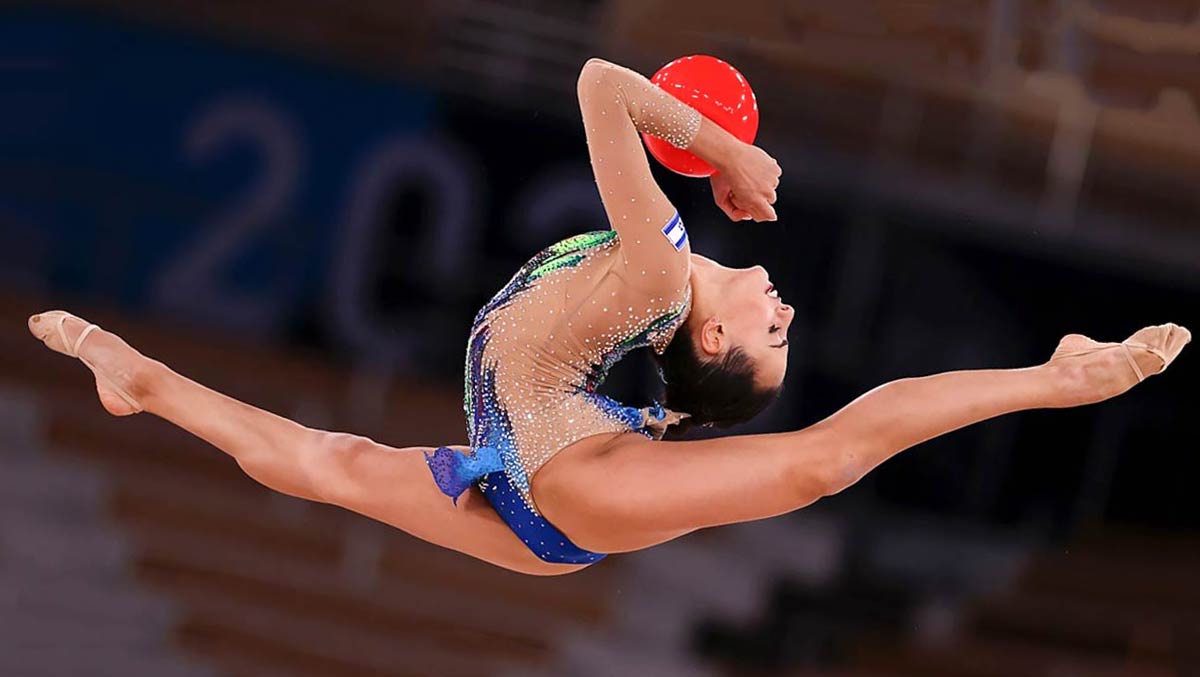
Because of the coronavirus pandemic, the 2020 Olympic Games have been postponed for a year. As a result, the rhythmic gymnastics competitions at the Tokyo Olympics were held from 6 to 8 August 2021. Traditionally, two sets of awards were played. Lina Ashram from Israel won the gold medal in the individual all-around final. Dina Averina from Russia took second place. Belarusian gymnast Alina Gornosko won the bronze medal.
As for the team competition, the palm belongs to Bulgaria, ROC (Russian Olympic Committee) takes second place, and the Italian team is the third.
The Gym Score Depot experts also collected information about the best results among Canadian gymnasts. Be sure to check the other sections of our site about rhythmic gymnastics in Canada.

